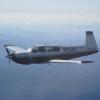Descent power setting
-
Members Online
- eft
- RescueMunchkin
- JustusSJ
- Yourpilotincommand
- Fix
- Montreal
- Steve Dawson
- Scottknoll
- Flyler
- Jeff Uphoff
- Old Chub
- Aaviationist
- TCC
- AdamJD
- Shawn26
- Rwsavory
- Joe Linnebur
- Rmfriday
- spaceman39a
- 201Steve
- richardbrochu27
- Wingover
- IvanP
- varlajo
- Mamkeci
- Peter T
- Hank
- Ibra
- Emmet
- Parker_Woodruff
- ajudson
- katzhome
- Marc B
- Thedude


Recommended Posts
Join the conversation
You can post now and register later. If you have an account, sign in now to post with your account.